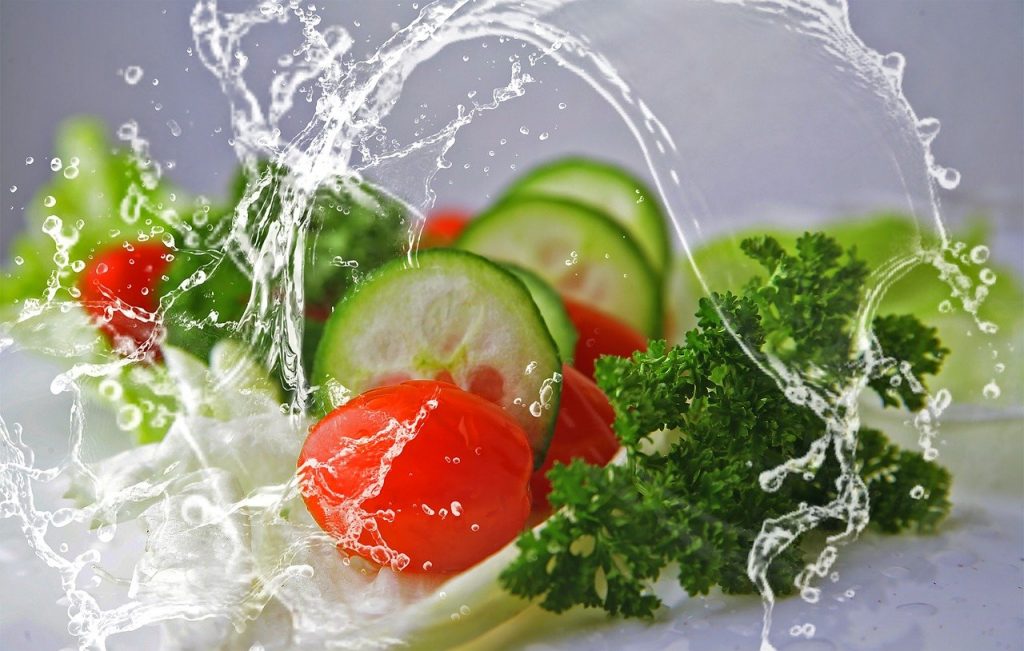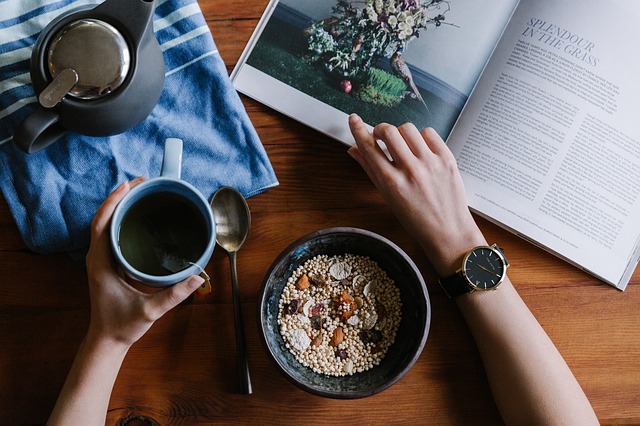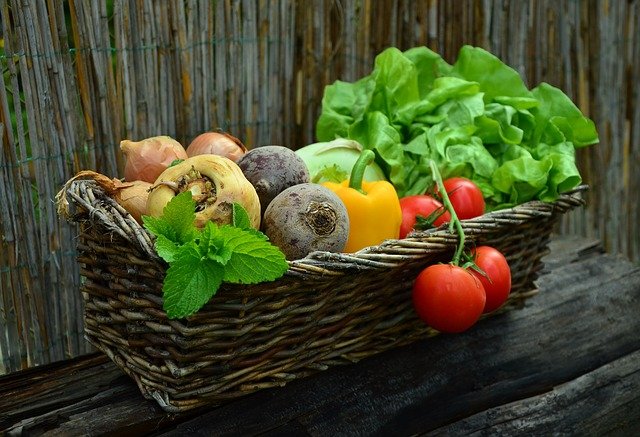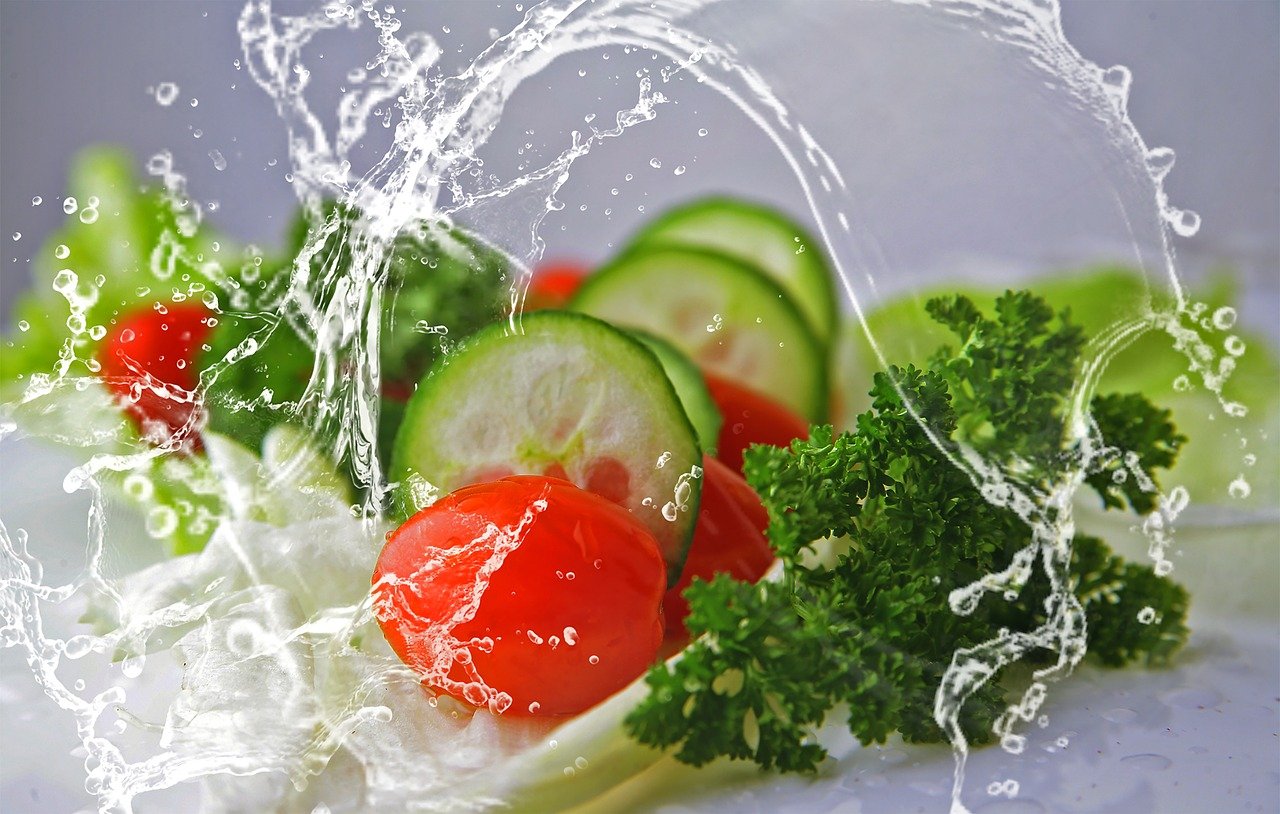Sometimes, limiting your calories isn’t enough to guarantee that you’re eating clean. There are a lot of popular fad diets circulating around the internet these days, but some of these may cause more harm to you than good, as they promote an unhealthy way of losing weight or have falsely claimed health benefits.
The real key to having a sound mind and a healthy body is by practicing healthy eating habits. But what exactly defines healthy eating?
Healthy eating doesn’t necessarily mean limiting yourself from delicious foods or starving yourself of the carbohydrates you need. Instead, healthy eating involves a lot of discipline and mindful eating, which can be achieved by following a few research-backed principles.
Why Should I Practice Healthy Eating?
Think of yourself as a car with food as the engine oil that keeps you running. We all know that some engine oils are “okay” and are just enough to keep your car running, but you’ll notice a significant improvement in your car’s performance when you’re using a higher quality engine oil.
The same principle goes with food. All kinds of food will give you energy and satiate you, no matter how unhealthy these can be. This is why some people can live off of fast food, frozen food, and canned food for most of their lives. But you’ll also notice that these people tend to face a lot of health problems later in life (obesity, cardiovascular diseases, and gastrointestinal problems) because these junk foods are high in preservatives and bad cholesterol.
When you’re consciously eating healthy, you will be satiated and energized in the best way possible. This doesn’t necessarily mean you have to spend thousands on salads and green smoothies, which is what most people see as healthy eating.
You can still enjoy your favorite meals, only that you have to be conscious of how natural the ingredients are. After all, healthy eating is also about cultivating a healthy relationship with food.
Here are some reasons why you should start eating healthy:
You’ll Be Protected From Diseases
From a healthy diet, you’ll be getting the necessary nutrients that your body needs to maintain its function, which includes the immune system. Poor nutrition and physical inactivity are the leading causes of life-threatening diseases such as cancer, diabetes, and heart disease.
You’ll Lose Weight, But In A Healthy Way
Part of eating healthy is to cut off the unnecessary trans fats and empty calories. These types of food can cause an excess buildup of fat in your body, as they contain more calories and fats in one serving. Trans fats are also considered the worst types of fat to consume as they contain virtually no nutritional value per serving.
Additionally, part of a healthy diet is being mindful of how much you’re eating. This doesn’t necessarily mean that you should enter caloric deficits. Instead, you just have to be mindful of what you only NEED to eat, because after all, it can be hard to control yourself once all the delicious food is right in front of you.
You’ll Have Better Mental Health
Not only will you have a healthier body, but you’ll experience better moods when you’re eating high quality and nutrient dense foods.
Several studies have linked healthy eating habits to lower risks of developing anxiety disorders, depression, and attention deficit-hyperactivity disorder (ADHD). Several vitamins and nutrients are considered essential in balancing brain function and hormone levels, such as vitamin B6, folate, vitamin B12, omega-3 fatty acids, and niacin. These nutrients can be found in higher content among clean foods that are minimally processed and contain little to no preservatives.[1]

9 Healthy Eating Habits That You Should Follow
Now that you’ve heard of all the benefits healthy eating entails, it’s never too late to adapt to a healthier lifestyle. Here are nine simple tips that you can follow which can make a significantly positive change in your life.
- Eat slower
Believe it or not, but the pace of your eating can make a huge impact on your health. Due to our fast-paced lifestyles, many people are inclined to eat faster to save time, but this can have some negative effects on our health.
Firstly, eating fast increases your chances of developing obesity. In fact, one study has shown that fast eaters are 115% more likely to be obese than slow eaters.[2]
This is because when we you fast, it’s easier to eat more than you need, as it takes at least 20 minutes for the brain to recognize that you’re already full. This constant calorie excess will eventually lead to excess weight gain, diabetes, poor digestion, and metabolic problems. [3]
One way to discourage fast eating is by focusing on what you eat – thus, you should avoid eating while watching TV, looking at social media, or doing other activities. You should also take smaller bites and savor the flavor of your meal by chewing slowly.
- Increase your protein intake
Among all the macronutrients, protein is the most filling per serving as it directly influences the hormone ghrelin, which signals satiety in our brains. In one study, it was found that a high protein breakfast lead to a higher ghrelin secretion over time as compared to a high carbohydrate breakfast.[4]
Protein also has a higher ‘thermic effect of food’ (TEF), which pertains to the energy required to digest, absorb, and dispose of ingested nutrients. Protein has a significantly higher TEF at 20-35%, while carbohydrates only have 5-10% and fat has 0-3%. This means you’ll also burn more calories simply by eating more proteins, which can help with weight loss. [5]
Protein also helps you retain muscle mass, which is an important factor in maintaining metabolism. This is especially useful as you get older, wherein metabolic rates decline and muscle mass deteriorates.[6]
Ideally, you should eat most of your proteins earlier in the day, specifically during breakfast. This will help you stay satiated throughout the day, keeping the temptation of binge-eating at bay. Eggs, dairy, beef, nuts, and beans are all great sources of proteins.
- Hydrate frequently
It cannot be stressed enough how important hydration is in maintaining good health. Not only will hydration give you more energy and clear skin, but it can also help manage your eating habits.
Drinking the proper amount water per day can help control your calorie intake as it can naturally suppress your appetite. When you feel hunger, your first response is probably to grab something to snack on. However, thirst can actually be mistaken by the brain as hunger, as these two signals can be confused by the brain.[7]
The next time you’re feeling hungry, reach for a glass of water instead of unhealthy snacks. If you still feel hungry after hydrating, then that’s a sign you’re definitely feeling hungry.
Also, make it a habit to drink water instead of sugary drinks, which include soft drinks, iced tea, energy drinks, and packaged juices. No matter if how zero-calories or zero-sugar these drinks advertise themselves, they will still contain a significant amount of sugars (or alternatives) that can be detrimental to your health when consumed often. Excess sugar intake can cause rapid weight gain from empty calories, along with high blood sugar levels.
- Use smaller dinnerware
It may sound very simple, but scientific studies have shown that using smaller dinnerware can actually control your food intake.
The reason is very simple: it tricks your brain into thinking that smaller portions are more than they actually are. This is an application of the Delboeuf Illusion, which is the optical illusion of relative size perception.[8]
On the other end, studies have also proven that larger serving bowls lead people to get more servings than they did with smaller bowls without them realizing it.[9]
- Always choose the whole grain option
When you’re shopping for bread, switching to whole wheat bread can make a huge difference for your health.
Compared to regular white bread, whole grain breads contain a higher amount of fiber, which is highly beneficial for digestive health. It can also help you control your food intake as high fiber content can make you feel full faster.
Whole grain breads are also less processed than white bread, which means that it contains more nutrients and minerals. Whole bread includes the bran and germ (the outer and inner layers) of a wheat berry, whereas white bread only uses the endosperm (the middle layer). By leaving out the bran and germ, white bread misses out on its fiber, folate, zinc, magnesium, and chromium content, which are all essential to our bodies.[10]
The same principle is also applicable to pastries and pasta that are made of whole wheat.
- Prepare home cooked meals, instead of eating out
Although going for the typical fast food or ordering takeout from the nearest restaurant may appear to save you lots of time, cooking your own food is still the healthier option.
When you make food yourself, you know exactly what goes into your meal. You can easily control your calorie and macronutrient intake – as compared to eating in restaurants where you’re not exactly sure how much butter they used of if their ingredients are actually fresh!
In Anthony Bourdain’s Kitchen Confidential (2000), the celebrity chef revealed that the reason why restaurant food is so good because of the ‘obscene’ amounts of butter used in every meal: “At a good restaurant, there will be a stick of butter in every meal.”
Studies have also proven that regular home-cooked meals reduced the incidence of obesity among households, especially children. [11]
- Go for baked and roasted food, instead of deep frying and grilling
Aside from the components that make up your meal, the method of how it was prepared also plays a huge part in how healthy it is.
Frying and grilling are very popular ways to cook food, as it requires less time to prepare. However, both of these methods are linked to life-threatening diseases, such as cancers and heart problems.
Firstly, the oils used in deep-frying are notoriously bad for the heart. When food is submerged in these fatty oils for a long period of time, it becomes absorbed and adds to caloric content. This is why if you leave a piece of French fry on tissue, you’ll notice that the tissue will become soaked from the oils absorbed by the potato.
Grilling, on the other hand, is also unsafe in the way that it can cause heterocyclic amines (HCAs) to form, which is a major culprit of colonic and stomach cancers.[12]
Other cooking methods, such as baking, roasting, broiling, slow-cooking, pressure cooking, stewing, and sous-vide are healthier as they do not involve the use of harmful compounds, such as fatty oils or charcoal.
- Snack on fruits and nuts
Instead of grabbing a pack of chips for a quick snack, take your time to prepare fruits and nuts to snack on throughout the day.
Junk foods are considered “empty calories”, as they contain so little nutritional value for a high calorie serving. These include cakes, cookies, donuts, pizza, burgers, candies, and soft drinks. These guilty pleasures should only be consumed in moderation, as excess intake will also cause excess weight gain and health problems.
Fruits and nuts, on the other hand, are tasty and sweet too. They’ll make you feel refreshed and energized, simply because they’re not processed foods.
Fruits are a great source of hydration, fiber, vitamins, and antioxidants. Although fruits contain sugar, these are not the same kind as those found in junk food. The antioxidants present in fruits will also help you fight off the degenerative effects of free radicals, which are the unstable atoms that damage your cells.
Meanwhile, nuts are a great source of protein and fiber, which can help satiate your hunger faster.
- Plan your meals ahead
Creating a meal plan will help you control the nutrients you put inside your body.
This is especially useful when you’re starting out with a healthy diet, as you will be trained to practice mindful eating. After all, the abundance of tempting fast food and restaurants can easily distract us from the goal of eating clean.
By strictly following a meal plan, you’ll be less likely to eat more than you’re supposed to. You can also save tons of money by preparing a large batch of meals that will last you a few days. Having planned meals will also save you the stress of thinking about your next meal, which may lead you to unhealthy options when you’re already hungry.
Conclusion
Healthy eating doesn’t just mean eating salads or setting calorie goals – it is also about creating a healthy relationship with food, which some people may find hard due to our fast-paced world.
From the little things, such as eating slower and using smaller plates, to creating detailed meal plans and preparing your own food, healthy eating is composed of habits that can be easily incorporated in our daily routines.
With enough determination and focus, you can achieve a healthier mind and body that will change your life for the better.
References
[1] Lim, S. Y., Kim, E. J., Kim, A., Lee, H. J., Choi, H. J., & Yang, S. J. (2016). Nutritional Factors Affecting Mental Health. Clinical nutrition research, 5(3), 143–152. https://doi.org/10.7762/cnr.2016.5.3.143
[2] Ohkuma, T., Hirakawa, Y., Nakamura, U., Kiyohara, Y., Kitazono, T., & Ninomiya, T. (2015). Association between eating rate and obesity: a systematic review and meta-analysis. International Journal of Obesity, 39(11), 1589–1596. doi:10.1038/ijo.2015.96
[3] Palsdottir, H. (n.d.). Does Eating Fast Make You Gain More Weight? Retrieved July 27, 2020, from https://www.healthline.com/nutrition/eating-fast-causes-weight-gain
[4] Blom, W. A., Lluch, A., Stafleu, A., Vinoy, S., Holst, J. J., Schaafsma, G., & Hendriks, H. F. (2006). Effect of a high-protein breakfast on the postprandial ghrelin response. The American journal of clinical nutrition, 83(2), 211–220. https://doi.org/10.1093/ajcn/83.2.211
[5] Westerterp K. R. (2004). Diet induced thermogenesis. Nutrition & metabolism, 1(1), 5. https://doi.org/10.1186/1743-7075-1-5
[6] Johnston, C. S., Day, C. S., & Swan, P. D. (2002). Postprandial thermogenesis is increased 100% on a high-protein, low-fat diet versus a high-carbohydrate, low-fat diet in healthy, young women. Journal of the American College of Nutrition, 21(1), 55–61. https://doi.org/10.1080/07315724.2002.10719194
[7] Water: How much should you drink every day? (2017, September 06). Retrieved July 27, 2020, from https://www.mayoclinic.org/healthy-lifestyle/nutrition-and-healthy-eating/in-depth/water/art-20044256
[8] McClain, A. D., van den Bos, W., Matheson, D., Desai, M., McClure, S. M., & Robinson, T. N. (2014). Visual illusions and plate design: the effects of plate rim widths and rim coloring on perceived food portion size. International journal of obesity (2005), 38(5), 657–662. https://doi.org/10.1038/ijo.2013.169
[9] Wansink, B., van Ittersum, K., & Painter, J. E. (2006). Ice cream illusions bowls, spoons, and self-served portion sizes. American journal of preventive medicine, 31(3), 240–243. https://doi.org/10.1016/j.amepre.2006.04.003
[10] Kumar, P., Yadava, R. K., Gollen, B., Kumar, S., Verma, R. K., & Yadav, S. (2011). Nutritional contents and medicinal properties of wheat: a review. Life Sciences and Medicine Research, 22, 1-10.
[11] Flattum, C., Draxten, M., Horning, M., Fulkerson, J. A., Neumark-Sztainer, D., Garwick, A., Kubik, M. Y., & Story, M. (2015). HOME Plus: Program design and implementation of a family-focused, community-based intervention to promote the frequency and healthfulness of family meals, reduce children’s sedentary behavior, and prevent obesity. The international journal of behavioral nutrition and physical activity, 12, 53. https://doi.org/10.1186/s12966-015-0211-7
[12] Lee, J. G., Kim, S. Y., Moon, J. S., Kim, S. H., Kang, D. H., & Yoon, H. J. (2016). Effects of grilling procedures on levels of polycyclic aromatic hydrocarbons in grilled meats. Food chemistry, 199, 632–638. https://doi.org/10.1016/j.foodchem.2015.12.017










